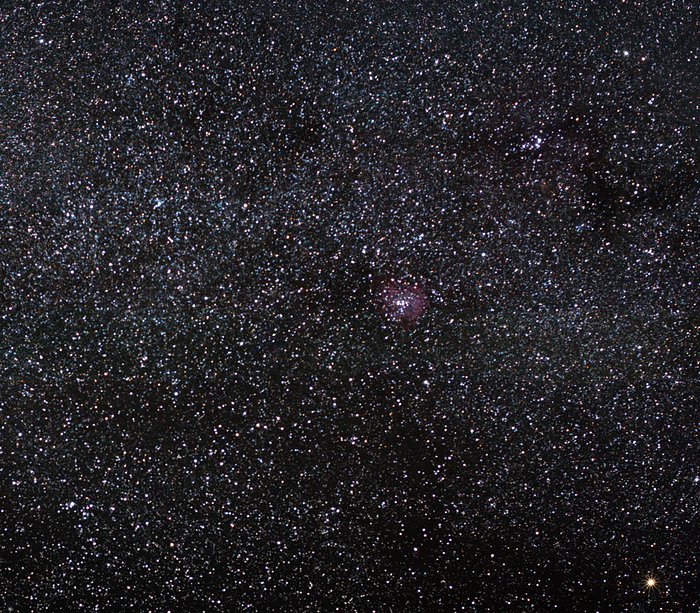The Rosette Nebula: a cosmic rose
The spectacular Rosette Nebula, a glowing hydrogen-rich cloud, is located some 4,700 light-years away toward the constellation of Monoceros (the Unicorn).
In the middle of the nebula shines the open star cluster NGC 2244, full of massive young stars only about a million years old. The intense ultraviolet radiation produced by these newborn stars illuminates the surrounding belts of hydrogen, making the whole region glow red. Powerful stellar winds have carved a hole in the centre of the Rosette Nebula, allowing the young stars to peek out from their native environment. These vigorous winds also cause the compression of the interstellar medium, thus triggering dense clouds of gas to collapse under their own weight to form new stars. This star-forming process will continue over the next few million years as the nebula dissipates.
NGC 2244 is easily seen even with small telescopes, though the Rosette Nebula itself is more difficult to spot and requires telescopes with a larger diameter. The nebula measures over 100 light-years in diameter, and the total mass of the nebula is estimated to be around 10,000 solar masses.
John Flamsteed, an English astronomer, discovered this remarkable object around 1690.
ESO/S. Brunier
À propos de l'image
| Identification: | b12 |
| Type: | Photographique |
| Date de publication: | 3 décembre 2009 23:20 |
| Taille: | 1574 x 1378 px |
À propos de l'objet
| Nom: | Rosette Nebula |
| Type: | Milky Way : Nebula : Appearance : Emission |
| Distance: | 4500 années lumière |
| Catégorie: | Nebulae |
